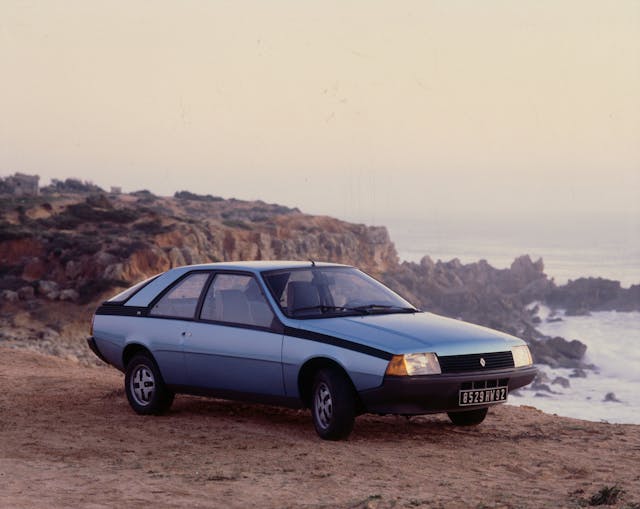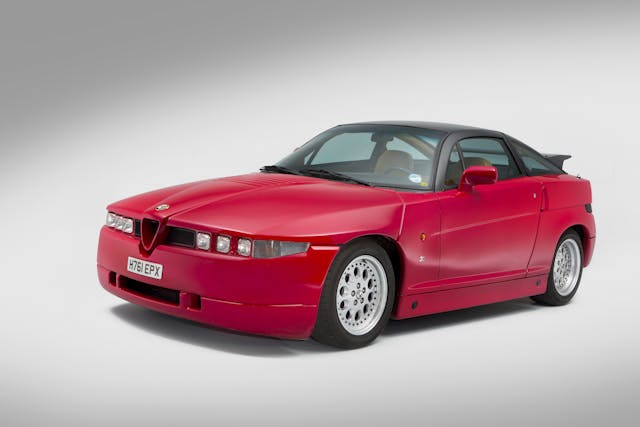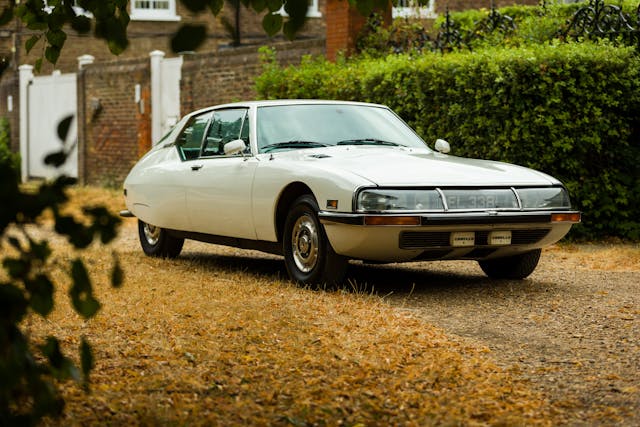Media | Articles
Celebrating the Gallic genius of Robert Opron, 1932–2021
Robert Opron, the French designer behind a host of incredible creations for Simca, Citröen, Renault, and Fiat, passed away on March 29 at age 89.
Born in Amiens into a military family, Opron spent much of his youth in North Africa, but he returned to France to study architecture, painting, and sculpture at the École nationale supérior des Beaux-Arts in Paris. His career as a designer took almost as many twists and turns as his passion for aerobatic flying. After a first job as an industrial designer, Opron briefly moved into the aviation industry, working on the Nord Atlas military transport plane before starting at Simca in 1958, where his first major job was to design the 1959 Chambord Présidence—a V-8 cabriolet used by President Charles de Gaulle.
Opron also penned the Simca Fulgur concept car, which included such future fantasies as radar obstacle detection and gyroscopic stabilization decades before the technology would actually be available. Simca let Chapron go in 1961. Under his severance agreement he wasn’t allowed to go to another car maker, so he took the job as Director of Style at a homeware manufacturer called Arthur Martin until he was free to join Citröen in 1962. It was during his 13 years there that Opron made his biggest impact on the automotive world (as you will see below) before he moved on to Renault in 1975. Opron then moved to Italy and worked for Fiat until he retired in 1992.
For the best part of the next decade, Opron offered his services as a consultant, although the little Ligier voiturette micro cars he designed are hardly what he will be remembered for. Instead, let’s focus on his legacy—the most beautiful, the most controversial, and the most important of Opron’s creations as we celebrate this gallic genius.
Citröen SM
Opron was involved with the second facelift of the DS right at the start of his Citröen career, but it was the quirky collaboration with Maserati that made his name. The avantgarde two-door SM of 1970 (shown in the photo above) was both breathtaking and wind-cheating. With a drag coefficient of just 0.26, a Kamm tail rear, faired-in rear wheels, and teardrop proportions, courtesy of a wider track at the front than the rear, it was like nothing else on the road. The powerful Maserati V-6 engine made it the world’s fastest front-wheel drive car at the time, while Citröen’s trademark hydro-pneumatic brakes made it one of the quickest to slow down as well. The U.S. was the SM’s biggest market, with some 2400 cars being sold out of a grand total of almost 13,000 built until 1975. Not a commercial success, but what a machine.
Marketplace
Buy and sell classics with confidence
Citröen GS
When it comes to numbers, the GS of 1970 simply dwarfs the SM. Launched in the same year after an extended 14-year development, the GS would go on to last 16 years and sell more than 2.5 million units. Once again, Opron targeted aerodynamic efficiency, but this time it was to make the most of the car’s one-liter flat-four engine. It shared the faired-in rear wheels with previous sleek Citröens, but it was taller and its four-door design more utilitarian. The GS is also notable for being the only Citröen to be fitted with a Wankel rotary engine. The Birotor, developed with NSU, was expensive and thirsty, and only 847 were built before Citröen withdrew it and even tried to buy back and scrap the few that were sold.
Citröen CX
The 1974 CX is said to be Opron’s favorite. This large fastback sedan was perhaps the best of both worlds—almost as aerodynamic and exhilarating to look at as the SM, but with even more grace and space than the GS. Opron’s design was so far ahead of the opposition that even when the CX ended production in 1991 it still looked futuristic. The CX was originally to have been powered by the Birotor engine, but thanks to its failure in the GS, it had a conventional inline four-cylinder instead. With its hydro-pneumatic brakes and suspension, the CX had the chassis to match the SM and eventually received the power it deserved when the GTi Turbo arrived in 1985. Citröen had designed the CX for the U.S. market, but it was never officially sold because the National Highway Traffic Safety Administration banned cars with height-adjustable suspension. Nonetheless, more than one million CXs were sold during its long and healthy lifespan.

Renault Fuego
When Opron moved to Renault, his initial task was a redesign of the Alpine 310, which he worked on with McLaren F1 designer Peter Stevens. The Fuego coupe of 1980 was the first ground-up new car to be designed under Opron’s watchful eye. Michel Jardin actually penned the shape, which placed the emphasis on Opron’s favored aerodynamics. In fact, the Fuego was one of the first mass-produced cars to be designed with the aid of a wind tunnel, resulting in a Cd of just 0.32. Other Fuego firsts included remote central locking and steering-wheel-mounted audio controls. The Fuego was sold by AMC dealers in the U.S., where it was only offered with the most powerful 2.2-liter or 1.6-liter turbo engines.
Renault Espace
The design of 1984’s monobox Espace minivan is credited to British designer Fergus Pollock, but it’s a sketch that Opron made while working at Simca that is believed to have inspired him. What is certainly true is that the Espace made its debut while Opron was in charge at Renault, and the fiberglass-bodied MPV went on to create a whole new marker for family haulers in Europe. It was even scheduled to take on the U.S., but AMC’s purchase by Chrysler killed that off.

Alfa Romeo SZ
It’s known as Il Mostro, The Monster, but to our eyes the 1989 Alfa Romeo SZ represents Opron’s finest work at Fiat. Despite the Zagato badging on the car, the famous Italian styling house didn’t actually design the SZ. Instead, Opron’s initial drawings were taken on by Antonio Castellana at the Fiat design studio, who put the finishing touches to this bonkers sports car based on the Alfa Romeo 75 sedan. Powered by Alfa’s famous 3.0-liter V-6, with a rear transaxle gearbox and lightweight composite bodywork, the SZ actually exceeded the initial planned production run of 1000 units. It was never sold in the U.S., but as soon as it hit 25 years old, American Alfisti (to the uninitiated, those are Afla fans) jumped at the chance to get behind the wheel of this Opron masterpiece.










